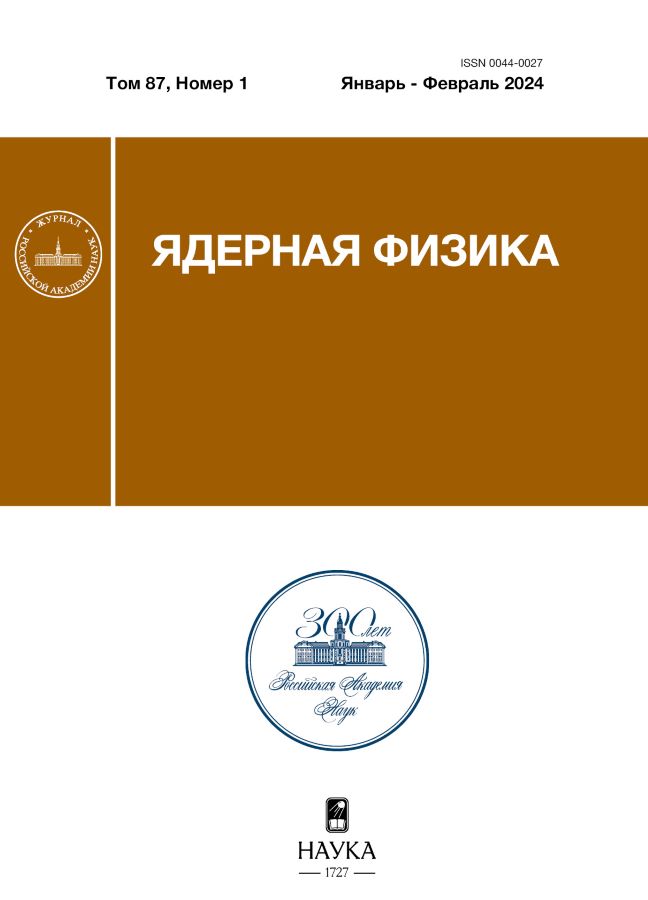Rare top-quark decay
- 作者: Slabospitsky S.R.1
-
隶属关系:
- NRC “Kurchatov Institute” — IHEP
- 期: 卷 87, 编号 1 (2024)
- 页面: 11-17
- 栏目: ЭЛЕМЕНТАРНЫЕ ЧАСТИЦЫ И ПОЛЯ. Эксперимент
- ##submission.datePublished##: 03.10.2024
- URL: https://cardiosomatics.ru/0044-0027/article/view/674668
- DOI: https://doi.org/10.31857/S0044002724010028
- EDN: https://elibrary.ru/KEPEOG
- ID: 674668
如何引用文章
详细
The calculation of the rare t-quark decay within the Standard Model as well as the charged Higgs contribution to this decay is presented. The role of possible background processes is discussed.
全文:
作者简介
S. Slabospitsky
NRC “Kurchatov Institute” — IHEP
编辑信件的主要联系方式.
Email: Sergey.Slabospitsky@ihep.ru
俄罗斯联邦, Protvino
参考
- Beneke et al., in Workshop on Standard Model Physics (and more) at the LHC (First Plenary Meeting) (2000), p. 419, hep-ph/0003033.
- P. A. Zyla et al. (Particle Data Group), PTEP 2020, 083C01 (2020), https://pdg.lbl.gov/
- V. D. Barger and R. J. N. Phillips, Collider Physics, Vol. 71 (Addison-Wesley, 1987).
- G. C. Branco, P. M. Ferreira, L. Lavoura, M. N. Rebelo, M. Sher, and J. P. Silva, Phys. Rept. 516, 1 (2012), arXiv:1106.0034.
- A. G. Akeroyd et al., Eur. Phys. J. C 77, 276 (2017).
- A. Arbey, F. Mahmoudi, O. Stal, and T. Stefaniak, Eur. Phys. J. C 78, 182 (2018), arXiv:1706.07414.
- G. Abbiendi et al. (ALEPH, DELPHI, L3, OPAL, LEP Collabs.), Eur. Phys. J. C 73, 2463 (2013), arXiv:1301.6065.
- T. Aaltonen et al. (CDF Collab.), Phys. Rev. Lett. 103, 201801 (2009), arXiv:0906.1014.
- V. M. Abazov et al. (D0 Collab.), Phys. Lett. B 710, 569 (2012), arXiv:1112.5431.
- M. Aaboud et al. (ATLAS Collab.), JHEP 1904, 046 (2019), arXiv:1811.12113.
- M. Aaboud et al. (ATLAS Collab.), JHEP 1809, 139 (2018), arXiv:1807.07915.
- G. Aad et al. (ATLAS Collab.), JHEP 2106, 145 (2021), arXiv:2102.10076.
- A. M. Sirunyan et al. (CMS Collab.), Phys. Lett. B 803, 135285 (2020), arXiv:1909.05306.
- A. M. Sirunyan et al. (CMS Collab.), Phys. Rev. D 102, 072001 (2020), arXiv:2005.08900.
- A. M. Sirunyan et al. (CMS Collab.), JHEP 2001, 096 (2020), arXiv:1908.09206.
- A. M. Sirunyan et al. (CMS Collab.), JHEP 2007, 126 (2020), arXiv:2001.07763.
- V. I. Borodulin, R. N. Rogalyov, and S. R. Slabospitskii, arXiv:1702.08246.
- S. R. Slabospitsky and L. Sonnenschein, Comput. Phys. Commun. 148, 87 (2002), hep-ph/0201292.
- E. Ma, D. P. Roy, and J. Wudka, Phys. Rev. Lett. 80, 1162 (1998), hep-ph/9710447.
- R. Decker, M. Nowakowski, and A. Pilaftsis, Z. Phys. C 57, 339 (1993), hep-ph/9301283.
- G. Mahlon and S. J. Parke, Phys. Lett. B 347, 394 (1995), hep-ph/9412250.
- E. E. Jenkins, Phys. Rev. D 56, 458 (1997), hep-ph/9612211.
- G. Altarelli, L. Conti, and V. Lubicz, Phys. Lett. B 502, 125 (2001), hep-ph/0010090.
- A. Papaefstathiou and G. Tetlalmatzi-Xolocotzi, Eur. Phys. J. C 78, 214 (2018), arXiv:1712.06332.
- P. Onyisi and A. Webb, JHEP 1802, 156 (2018), arXiv:1704.07343.
- N. Quintero, J. L. Diaz-Cruz, and G. Lopez Castro, Phys. Rev. D 89, 093014 (2014), arXiv:1403.3044.
- A. M. Sirunyan et al. (CMS Collab.), JINST 13, P05011 (2018), arXiv:1712.07158.
补充文件
附件文件
动作
1.
JATS XML
2.
Fig. 1. Diagram describing the decay H+ → t*b → W+bb due to the contribution of the virtual t-quark.
下载 (15KB)
3.
Fig. 2. Probabilities of H±-boson decays in three channels for four values of M(H+) masses as a function of tanβ (the mass values indicated are in GeV).
下载 (303KB)
下载 (70KB)
下载 (80KB)
下载 (27KB)
7.
Fig. 6. Diagrams describing the decay t → bbb +νl, in which the lepton pair +νl is not formed from a virtual W boson.
下载 (39KB)
8.
Fig. 7. Diagrams describing the decay t → bbbcs, in which the cs pair is not formed from a virtual W boson.
下载 (65KB)
9.
Fig. 8. Distribution of the invariant mass of the cs pair in the decay t → bbbcs. The sharp peak on the right corresponds to the decay of the virtual W boson into a pair of cs quarks. The wide part on the left corresponds to the contribution in which cs is not formed from the virtual W boson.
下载 (54KB)

















